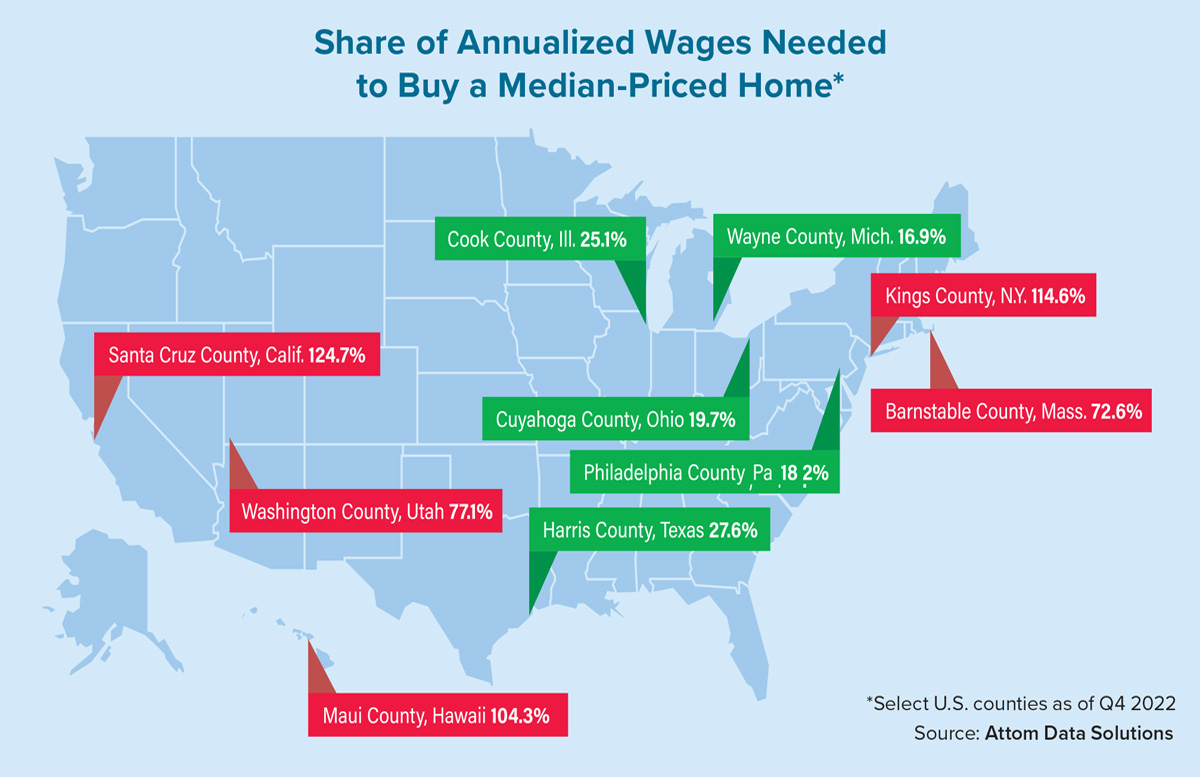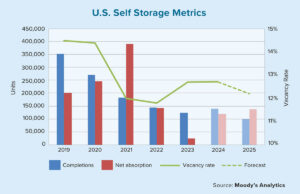Even though home prices have plateaued or declined in many U.S. markets, affordability worsened in 99% of the counties analyzed in fourth-quarter 2022 by Attom Data Solutions. In the final three months of last year, data shows that the median-priced single-family home and condominium were less affordable compared to historic averages in virtually every county analyzed.
In fact, a key affordability threshold was crossed at the end of 2022. On a national level, the portion of average wages required to pay the major expenses of homeownership increased to 32.3%, a figure deemed unaffordable by traditional lending standards (i.e., a 28% debt-to-income ratio). The portion of average wages needed to own the typical home now stands at its highest point since 2007.
Affordability issues have long been under scrutiny by those in the real estate and mortgage industries, as the housing market has seen historic or near-historic price gains in recent years. But these gains were largely tempered by historically low mortgage interest rates — a factor that has flipped in the opposite direction over the past year. Affordability has been crippled by rising rates that more than doubled in 2022 and topped 7% for a short time. These increases weren’t offset by rising wages or the small declines seen in home prices.
Economic forces also are coming to bear on homeownership affordability. The stock market has seen significant declines and remains volatile. Wages increased by 7.4% during the past year, although this growth slowed to 1.3% between the third and fourth quarters, while the 6.5% inflation rate to end the year remained near a 40-year high point. These influences have helped to drive down home prices after a decade of gains. The U.S. median price dropped by 3% from Q3 to Q4 and finished last year nearly 7% below its peak in Q2 2022.
Affordability across most of the country worsened significantly in 2022. Median home prices in 577 of the 581 counties analyzed this past fourth quarter (99%) were less affordable compared to historical levels. This number was significantly higher than the 393 counties (68%) in this category a year earlier and more than three times higher than the 181 counties (31%) classified as such in Q4 2020.
Even when taking historic norms out of the equation, homeownership at that time was considered unaffordable to average local wage earners in 427 of the 581 counties analyzed in the Attom Data report (or 74%). Unsurprisingly, large urban metros in desirable locations were among the areas with the most affordability issues in Q4 2022. These include the California counties of Los Angeles, San Diego and Orange; Maricopa County (Phoenix), Ariz.; and Kings County (Brooklyn), N.Y.
Some of the same counties require the largest portion of average wages in order to own a home. Leading the way in this unaffordability metric is Santa Cruz County, Calif., where 124.7% of annualized weekly wages are needed to buy a single-family home. It was followed by Kings County, N.Y., at 114.6%; Marin County, Calif., at 109.6%; and Maui County, Hawaii, at 104.3%.
There still are several metro areas that are more affordable, where major expenses for median-priced homes remain within reach for the average local worker. The most populous counties that remain affordable (as the chart on this page shows) include the core municipalities of the Chicago, Houston, Detroit, Philadelphia and Cleveland metro areas.
Despite these somewhat disheartening figures, there is potential for improved affordability in 2023, especially as home prices appear to be stabilizing and even shrinking slightly. If wage growth continues to be strong and interest rates level off or drop gradually, buying a home could be an affordable option for many more potential borrowers. ●
Author
-

Rob Barber is CEO of Attom, curator of the nation’s premier property database. After joining the company in 2015, Barber spearheaded the creation of the Attom Data Warehouse. A 25-year veteran in the real estate information-services industry, Barber directs the ongoing product innovation that leverages the company’s data warehouse and data-delivery platforms, which fuel real estate transparency.




